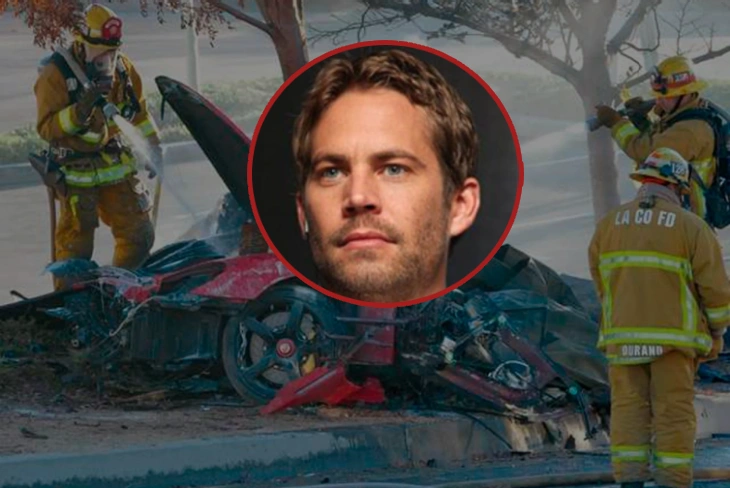Paul Walker Car Accident life ended tragically on November 30, 2013. He was known for his role as Brian O’Conner in the Fast and Furious film series. This franchise made him a household name and a beloved figure in car culture. However, his life was cut short in a horrific car accident that shocked fans around the world. The details of the accident reveal not only the circumstances surrounding his death but also highlight important lessons about speed and safety on the roads.
The car accident occurred in Santa Clarita, California, while Paul Walker was leaving a charity event for his organization, Reach Out Worldwide. He was riding in a 2005 Porsche Carrera GT driven by his friend Roger Rodas, who was an experienced race car driver. The two were driving down a business park road when the tragedy struck. Witnesses reported seeing the car speeding before it crashed into a concrete light pole and a tree, resulting in a fire that engulfed the vehicle almost immediately. Sadly, both Walker and Rodas died at the scene due to traumatic injuries and severe burns.
Details of the Accident
Investigators later determined that the Porsche was travelling at speeds between 80 to 93 mph at the time of the crash. This was significantly above the posted speed limit of 45 mph for that area. The Los Angeles County Sheriff’s Department concluded that unsafe speed for roadway conditions was the primary cause of the accident. They analyzed surveillance footage and data from the car’s onboard systems to reach this conclusion. The high speed made it impossible for Rodas to control the vehicle as it approached a curve in the road.
The impact of the crash was devastating. Both men suffered severe and fatal injuries. Paul Walker sustained multiple traumatic injuries, including fractures to his jaw, collarbone, ribs, and pelvis. The fire that erupted after the crash burned both bodies beyond recognition. Investigators confirmed that there were no drugs or alcohol involved in either man’s system at the time of the accident.
The Aftermath of Paul Walker’s Death
The aftermath of Paul Walker’s tragic death led to widespread mourning among fans and friends alike. His daughter, Meadow Walker, became a prominent figure after his passing. She honoured her father’s legacy by continuing his philanthropic efforts through Reach Out Worldwide, which provides disaster relief around the world.
Additionally, Walker’s death sparked conversations about automotive safety and speed regulations. Many people began to question whether high-performance cars like the Porsche Carrera GT are safe for everyday driving, especially at high speeds. Following this incident, several lawsuits were filed against Porsche by Walker’s family members, claiming that design flaws in the vehicle contributed to his death.
Legal Consequences
In one notable case, Meadow Walker filed a wrongful death lawsuit against Porsche and eventually received a $10 million settlement. The lawsuit claimed that the car lacked necessary safety features that could have prevented such a tragic accident. Although Porsche denied responsibility for Walker’s death, they acknowledged that their vehicle was not designed for use at unsafe speeds or with aftermarket modifications.
This legal battle highlighted significant issues regarding automotive safety standards and regulations for high-performance vehicles. Many experts argued that manufacturers should ensure their cars are equipped with advanced safety technologies to protect drivers and passengers from such catastrophic outcomes.
Lessons Learned from Paul Walker’s Accident
Paul Walker’s car accident serves as a stark reminder of the dangers associated with speeding and reckless driving. Statistics show that speeding is one of the leading causes of fatal car accidents worldwide. According to reports from traffic safety organizations, excessive speed contributes to nearly 30% of all road fatalities.
Moreover, this incident emphasizes the importance of adhering to speed limits and driving responsibly. No matter how skilled a driver may be, losing control at high speeds can lead to devastating consequences not only for those inside the vehicle but also for innocent bystanders.
Speeding Statistics
To further illustrate this point, here are some key statistics related to speeding:
- 30%: Percentage of road fatalities attributed to speeding.
- 90%: Percentage of single-vehicle fatal crashes involving speeding.
- 45 mph: The posted speed limit where Paul Walker’s accident occurred.
- 80-93 mph: Estimated speed range at which Paul Walker’s vehicle was travelling during the crash.
These numbers highlight how critical it is for drivers to obey traffic laws and prioritize safety over speed.
Paul Walker’s Legacy
Despite his untimely passing, Paul Walker left behind an enduring legacy through his work in film and philanthropy. His role in Fast and Furious not only entertained millions but also fostered an appreciation for car culture among fans around the world.
Walker’s commitment to helping others through charitable work has inspired many people to get involved in their communities. His foundation continues to support disaster relief efforts globally, ensuring that his spirit lives on through acts of kindness and generosity.
Conclusion
In conclusion, Paul Walker’s tragic car accident serves as both a heartbreaking reminder of life’s fragility and an important lesson about road safety. While fans continue to celebrate his contributions to film and philanthropy, it is crucial to remember the circumstances surrounding his death as a call for responsible driving practices.
As we reflect on this tragedy, let us honour Paul Walker by promoting safe driving habits and advocating for better automotive safety standards. By doing so, we can help prevent similar accidents from occurring in the future.

